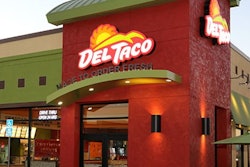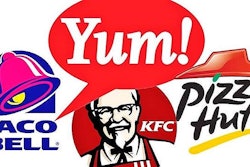
In recent years, we’ve seen the retail landscape make a major shift. To survive in a marketplace where e-commerce has taken a front seat, retailers are adapting to shorter delivery windows and consumer expectations. The food and grocery landscape isn’t exempt from this wave of change, however, and many food retailers are focusing on boosting online sales in order to increase revenue, maintain brand relevance and compete with Amazon Fresh.
In order to remain competitive and meet the demands of consumers, many food retailers are joining forces with 3PLs to make their supply chain as efficient as possible. One way to do this is by incorporating cutting-edge technology into the supply chain.
Factors Changing the Landscape: Amazon, Meal Kits
Amazon is currently delivering groceries directly to consumers’ homes via Prime Now. Amazon’s market share of online grocery sales in the US was double that of Walmart last year, according to One Click Retail. Meanwhile, Amazon Fresh, the e-commerce giant’s subscription-based service offering fresh meat, seafood, produce and other household essentials, generated $350 million in sales, while the company’s overall grocery business raked in $2 billion. Amazon also acquired Whole Foods the same year. A smart move on the company's part, considering that in doing it has gained hundreds of brick and mortar stores nationwide and a robust network of conditioned facilities. This allows Amazon to position its products as close to the end-consumer as possible. These facilities also serve as fulfillment centers for Amazon Fresh orders. With this influx of physical stores and an established cold chain, Amazon can push suppliers to lower prices, increase scale and be more marketing focused.
This combination of infrastructure and resources supports the new reality of the e-commerce business model, which is characterized by higher frequency shipments of lower volumes of product, as opposed to the traditional retail model of high volume shipments at lower frequencies.
However, Amazon’s growing market share isn’t the only thing retailers need to keep in mind, meal kits also represent a threat and opportunity in the food logistics space. According to Pentallect, the meal kits industry has skyrocketed to $2.2 billion in recent years. While some meal kit companies are struggling to achieve consistent profitability, grocery store chains are acquiring these startups left and right. Some, including Kroger, have even begun offering the kits in-store, to compete with this new source of online competition.
The bottom line is that traditional brick and mortar food retailers are faced with more challenges than ever. However, as grocery stores begin to offer their own take on meal kits, they have a distinct advantage over their online competitors: they don’t incur the costs of individual packaging as well as home delivery costs, allowing them to offer potentially lower prices to highly price-sensitive consumers. In order to further press their advantage, food retailers can ensure their supply chains are buttoned up with the help of 3PLs.
The Role of 3PLs
Logistics has become a core competency for organizations. More than ever, supply chain efficiency can make or break a company’s success. To get a leg up on the competition, logistics leaders should seek a 3PL that can utilize the following tactics to accommodate their needs in this changing and competitive marketplace:
● Assisting suppliers with meeting the stringent and costly compliance requirements of large retailers such as Walmart and Target
● Incorporating proprietary, cutting-edge technology solutions to provide real-time tracking, business intelligence and strategic insights. Developing and implementing technology solutions can be an expensive and time-consuming proposition. By working with a 3PL, a shipper can gain immediate access to technology with little- to no-cost and much shorter implementation. This is a huge advantage for shippers.
● Developing mode optimization and consolidation programs to maximize efficiencies and mitigate risk
● Exceptional flexibility, agility and access to capacity that can exceed that of asset-based providers
In order to better serve customers, 3PLs are developing their own technology to automate freight quoting, tracking, and servicing, which in turn drives value for shippers and carriers through improved accuracy, enhanced service, and increased shipment velocity. As companies reflect on changes to the retail marketplace, they’ll need to look to logistics to solve common problems like consumer demands for lower prices and greater convenience. By working in tandem with a knowledgeable 3PL, food retailers can tackle changes to the marketplace and continue to compete, grow and thrive.



















